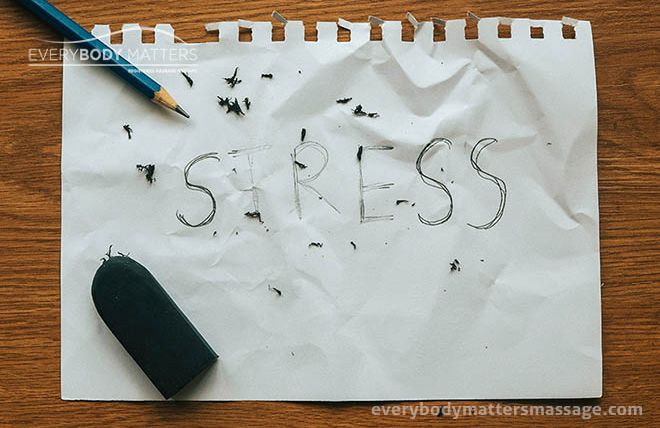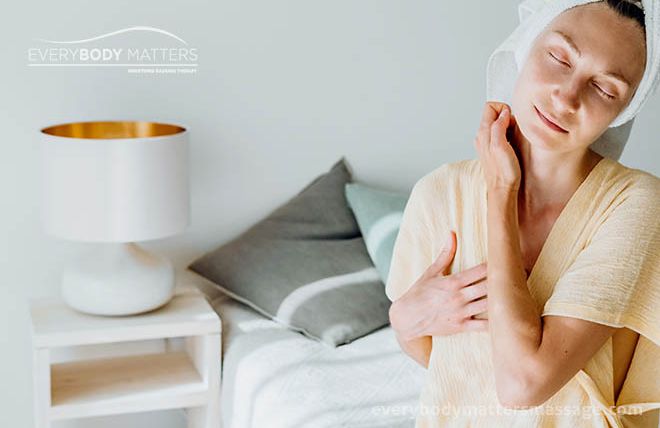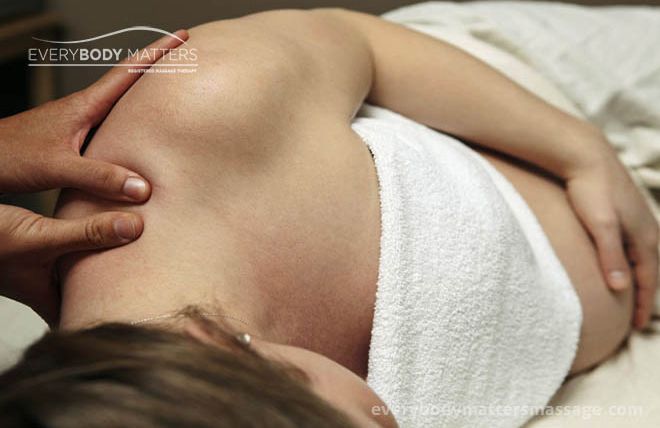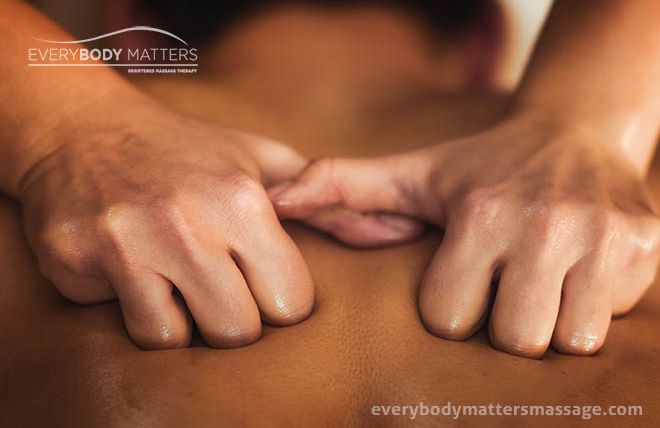Unleashing the Healing Power of Touch: An Exploration of Massage Therapy Benefits
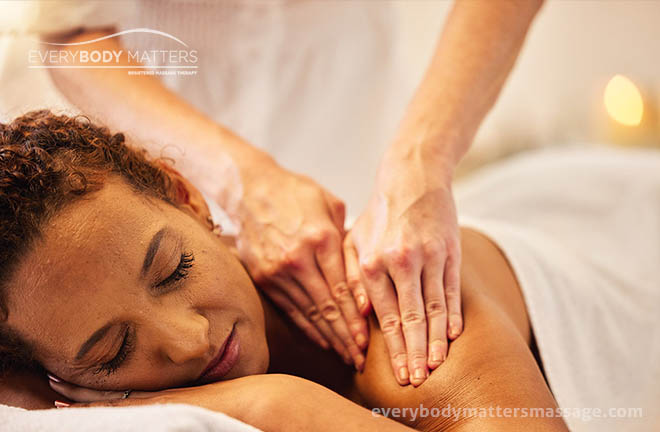
Introduction

The art of massage has been around for thousands of years and is practiced all over the world. The term “massage” was first used in French in the 19th century, but the practice itself dates back to ancient times. Egyptians, Greeks, and Chinese all used massage as a way to promote healing and relaxation.
Massage is a manual manipulation of soft tissues such as muscles, tendons, ligaments, and fascia. It can be performed with the hands, fingers, elbows, knees or feet.
Massage can range from light stroking to deep pressure depending on the individual’s needs. The goal is to alleviate pain and tension while promoting relaxation and well-being.
Definition of Massage and its Historical Roots.
The definition of massage varies depending on who you ask. In general terms, it involves manipulating muscles or other soft tissues to improve well-being. Massage therapy can include techniques such as Swedish massage (long strokes), deep tissue massage (firm pressure), sports massage (focused on athletes) or shiatsu (finger pressure).
Regardless of technique or purpose behind it - pain relief or relaxation - massages have roots that go back thousands of years throughout different cultures. In ancient Greece and Rome baths were used for cleansing but also for therapeutic purposes with oils rubbed onto skin for muscle relaxation after physical exertion,
The Chinese developed acupressure- certain points on the body are pressed by fingers instead of needles. One reason why massage has endured over centuries is due to its simplicity- just using hands- which makes it accessible even in resource limited settings.
Importance of Touch in Human Communication and Connection
Touch is one of our primary senses as human beings; crucial early childhood development research shows touch helps with cognitive & emotional development [3]. Human touch has been shown to even have a positive impact on the immune system and mental health through the release of oxytocin, which is sometimes known as the ‘cuddle hormone’.
Research also indicates that lack of touch can lead to depression and anxiety [5]. Touch is an essential part of our lives and helps us feel safe, connected, loved and heard. Massage is a technique that combines physical pressure with human touch to promote healing and relaxation. Its roots in ancient cultures throughout the world are a testament to its efficacy.
The importance of touch in human communication and connection cannot be overstated. It can help improve overall well-being by reducing stress, promoting relaxation, and enhancing emotional states such as happiness or contentment.
The Science of Touch
How touch affects the body and mind
The sense of touch is a fundamental aspect of human experience, providing important feedback about our surroundings and our relationships with others. When we are touched, it triggers a cascade of physiological responses in the body.
The nerve endings in the skin send signals to the brain which interprets those signals as sensations such as warmth, pressure or pain. Touch has been found to be particularly important for infants who need physical contact as part of their development.
In adults, touch is also crucial for physical and emotional wellbeing. Studies have shown that regular touch can help reduce stress and improve mood by increasing levels of serotonin and dopamine in the brain.
These chemicals help regulate mood, pleasure, and reward centers in the brain. Additionally, touch has been shown to improve immune system function by increasing levels of white blood cells which fight infections.
The role of hormones like oxytocin and cortisol in touch therapy
There are specific hormones that are released when we experience positive physical contact with others. Oxytocin is one such hormone which has been dubbed “the love hormone” because it is released during intimate moments such as hugging or kissing.
It plays a key role in social bonding between humans and animals. Cortisol is another hormone released when we experience stress or pain.
It can have negative effects on our health if levels remain high for extended periods of time. However, massage therapy has been found to significantly decrease cortisol levels while simultaneously increasing oxytocin levels leading to an overall feeling of relaxation.
Overall, understanding the science behind touch helps us appreciate its positive effects on both our bodies and minds. By harnessing this knowledge through practices like massage therapy, we can help promote better health outcomes for ourselves and others around us.
Health Benefits of Massage Therapy
Physical Benefits: Pain Relief, Improved Circulation, and Increased Flexibility
Massage therapy has been shown to provide numerous physical benefits. One of the primary benefits is pain relief. A study published in the Annals of Family Medicine found that participants who received massage therapy for chronic lower back pain experienced significant reductions in pain intensity and disability after 10 weeks of treatment.
Another physical benefit of massage therapy is improved circulation. During a massage, the pressure applied by the therapist can help increase blood flow to different areas of the body.
This can help improve oxygen and nutrient delivery to muscles and other tissues, which can promote faster healing. In addition to pain relief and improved circulation, regular massage therapy can also help increase flexibility.
This is especially important for athletes or individuals who engage in regular physical activity. By lengthening muscles and reducing tension, massages can improve range of motion and reduce the risk of injury.
Mental Health Benefits: Reduced Anxiety, Stress, and Depression
Beyond its physical benefits, massage therapy also has several mental health benefits. One such benefit is reduced anxiety. A study published in The Journal of Alternative and Complementary Medicine found that participants who received a 30-minute chair massage experienced significant reductions in anxiety levels compared to those who simply sat quietly for 30 minutes.
Similarly, massage therapy has been shown to reduce stress levels as well. A review published in the Journal of Bodywork and Movement Therapies found that several studies have demonstrated how regular massages can significantly decrease cortisol levels - a hormone associated with stress - in patients with conditions like fibromyalgia or chronic fatigue syndrome.
Research also suggests that massage therapy may be an effective tool for reducing symptoms associated with depression. In one study published in Psychiatry Research: Neuroimaging, participants with depression who received twice-weekly Swedish massages over a five-week period experienced significant reductions in anxiety and depression symptoms.
Overall, the health benefits of massage therapy are extensive and varied. From physical pain relief to reducing anxiety and depression, regular massages can be a valuable addition to any individual's healthcare routine.
A Few Popular Types of Massage Therapy
Massage therapy is an umbrella term that covers several different techniques, each with its own unique benefits and purposes. The following are some of the most common types of massage therapy:
Swedish Massage
This is perhaps the most popular type of massage therapy, and it involves long smooth strokes, kneading, and circular movements on the topmost layers of muscles. It is a gentle type of massage that helps to promote relaxation, improve circulation, and ease muscle tension. Swedish massage can be used for a range of health issues such as stress reduction, improving sleep quality and boosting overall well-being.
Deep Tissue Massage
Deep tissue massage uses slow strokes with more pressure applied to reach deeper layers of muscles. It targets areas where there may be knots or tension caused by repetitive strain or injuries.
Deep tissue massage helps to release chronic muscle tension and reduce inflammation. However, it can be painful if there is any significant soreness or tightness in muscles.
Choosing the Right Massage Therapist
Now that we have established the benefits of massage therapy, it's important to know how to choose a qualified therapist who will help you achieve your health goals. Choosing the right therapist can be a daunting task, but it's crucial to ensure that you get a professional and effective massage experience. Here are some tips on what to look for when choosing a massage therapist:
Qualifications to look for in a therapist
A professional and experienced massage therapist will have completed extensive training and certification programs. When searching for a massage therapist, make sure they have proper qualifications such as licensure or certification from accredited institutions. A licensed or certified massage therapist will understand the anatomy of the body, how muscles work, and they will also be aware of any safety concerns related to specific medical conditions.
Additionally, it's essential to choose a masseuse who specializes in specific areas such as sports injuries or pregnancy massages if required. Specialization in certain areas indicates that the practitioner has further knowledge and expertise that can provide more specialized treatment options.
Questions to ask before booking an appointment
Prioritizing communication with your potential masseuse is crucial before booking an appointment. You should not hesitate in asking questions during your initial consultation or through their website's contact form.
Some essential questions include:
- What type of massages do you specialize in?
- How many years have you been practicing?
- Do you hold any certifications? If so, which ones?
- What is your experience with my particular condition/issue?
- Apart from massaging, what other techniques do you incorporate into your sessions?
Choosing the right massage therapist is vital to ensure you receive a safe and effective massage experience. By looking for the appropriate qualifications, specialization, and asking the right questions, you can feel confident in selecting a qualified professional.
Preparing for Your Massage Session
Before your massage session, there are a few things you can do to ensure you have the best possible experience. First, make sure you communicate with your therapist about any medical conditions or injuries you may have.
This will help them tailor the massage to your specific needs and avoid causing any further discomfort or injury. Additionally, dress comfortably and plan to arrive early so you have time to fill out any necessary paperwork and relax before the session begins.
What to expect during a session
Once your massage begins, your therapist will likely ask if the pressure is comfortable and adjust it accordingly. They may use different techniques and strokes throughout the massage, such as long strokes along the muscles or kneading of specific areas.
It's important to communicate with your therapist throughout the session if you need more or less pressure, or if anything feels uncomfortable.
Tips for maximizing the benefits of your massage
To get the most out of your massage experience, it's important to take care of yourself both before and after your session. Drink plenty of water both before and after your appointment in order to stay hydrated; this also helps flush out toxins that may have been released by tight muscles being worked on during the session.
Additionally, taking a warm bath or shower after your appointment can help reduce muscle soreness that might occur afterwards as well as help relax further post-appointment.
Preparing for your massage session, knowing what to expect during the session, and taking steps to maximize the benefits of your massage are all essential components of a great massage experience. With these things in mind, you can get the most out of your sessions and enjoy the many physical and mental benefits that come with regular touch therapy.
Conclusion: The Power of Touch in Healing
The Sum of its Parts: What Massage Therapy Can Do for You
Throughout this article, we have explored the many benefits of massage therapy, from physical effects such as aiding in pain relief, improved circulation, and increased flexibility to mental health benefits like reducing anxiety, stress, and depression. Massage therapy holds the power to promote healing and overall well-being through human touch. When administered by a trained therapist, massage therapy provides a unique opportunity for clients to receive personalized care that is tailored to their needs.
Take Control of Your Health Today
If you are considering massage therapy as part of your healthcare regimen you should take special care when selecting your therapist. Look for someone who is licensed and specialized in the type of massage that will best meet your needs.
Furthermore, communicate with them ahead of time about any pre-existing conditions or injuries that may affect your treatment. A qualified therapist will listen attentively and develop a plan individualized according to your specific circumstances.
A New Era of Wellness Through Touch Therapy
With its long history dating back thousands of years ago across different cultures around the world, massage therapy has stood the test of time as an amazing source of natural healing. As the world continues to embrace alternative healthcare options beyond traditional western medicine, it is clear that touch therapy is an essential component in promoting wellness both physically and mentally.
It is our hope that this article has provided insight into how touch can heal us both inside and out.
By taking advantage of this powerful tool through regular visits with a licensed massage therapist we can help ourselves live happier, healthier lives.
Do you live in the GTA?
Ready to book your massage?
It's quick and easy, just click the button below and follow the instructions. You will receive confirmation and all the patient intake forms via email. Kindly read, complete and sign intake and consent forms, including cancellation policy. I believe everyone's time is valuable, and as a courtesy to everyone, we thank you for being on time. Late arrivals can only be extended to the time remaining in the scheduled session. If you cancel with less than 24 hours notice, or miss your appointment, you will be charged for the entire amount of your scheduled treatment. Insurance does not reimburse claims for late cancel lations or missed appointments.
If you don't see the time you are looking for, please add yourself to the wait list.
If an appointment becomes available, you wil l be given priority.

